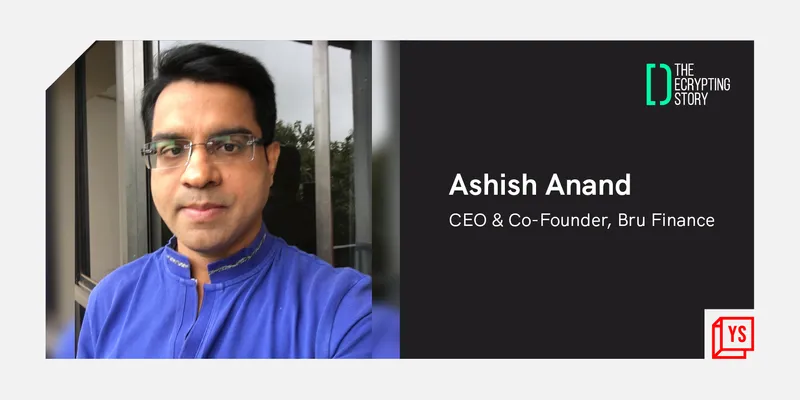This blockchain startup empowers farmers to ‘tokenise’ their agricultural commodities and avail loans against them
With Ashish Anand’s Bru Finance, farmers can access a warehouse receipt protocol on a mobile app when they bring their produce to a warehouse. When the commodities are brought in, the protocol creates NFTs out of them and allows farmers to avail loans against them.
In 2018, Ashish Anand was exploring the concept of tokenisation - which refers to representing the value of real-world assets through digital tokens on a digital ledger or blockchain.
At the time, he thought to himself that if the trend of tokenisation picks up, the world would also adopt lending against the tokenised assets.
This led him to launch Whrrl Finance (in 2019) and Bru Finance ( in 2021) in Mumbai to build a connecting platform for Decentralised Finance (DeFi) lending against real-world assets (commodities) for farmers.
“Whrrl is the blockchain lending platform for onboarding banks and tokenising agricultural commodities produced by farmers. With Bru, we are able to bring capital from DeFi and bridge the two,” he says.

How Bru’s CeFi-DeFi bridge works
With Bru’s Centralised Finance (CeFi) and DeFi bridge, farmers can access a warehouse receipt protocol on a mobile app when they bring their produce to a warehouse. When the commodities are brought in, the protocol creates NFTs out of them.
The NFTs, which are backed by the agricultural commodities, are represented in the form of warehouse receipts. Farmers can then avail loans from banks against these NFTs.
“This is a way for farmers to lock their real-world assets on a custodial platform and get loans against that. We’ve already tokenised over $500 million worth of commodities on our platform and across 1,400 warehouses,” Ashish adds.
While crypto trading and DeFi can be considered speculative, Bru remains free from speculation and protects farmers from the volatility of crypto, DeFi and NFT markets.
This is because the Bru bridge works only on the lending side of DeFi, and does not enable farmers to engage in trading. Ashish also claims the consumer-facing app is simple and intuitive to use and does not require farmers to download a crypto wallet.
He adds, “We have a private blockchain running In India to allow banks and warehouses to come together on a single platform. With Bru, we are bridging this private blockchain to public blockchains like Ethereum, Polygon, Binance Smart Chain and other multi-chains.”

Future of DeFi lending against real-world assets
Going forward, Bru plans to add partnerships across the world and target emerging markets for tokenisation of real-world assets. It is also looking to bring more assets on its lending platform and add fixed rate interest and short term bond features on its product.
“We are only scratching the surface of DeFi lending against real-world assets since there are trillions of dollars’ worth of asset-backed loans disbursed each year. On the DeFi side, there are players such as Maker, Compound and Aave. Centrifuge is also trying to bring real-world assets to blockchain,” he says.
Despite competition, Ashish believes all his peers are going to make it, and with Bru’s existing traction and numbers, it can stay ahead of the curve. He is also optimistic on bringing Bru’s bridge, which is currently in testnet, to the mainnet stage over the next few months.
Bru is playing in a market where the Total Value Locked (TVL) in DeFi touched $100 billion for the first time this year, and the popularity of NFTs skyrocketed.
Further, scaling blockchain infrastructure is a key trend that has picked up in the last two years, as Ethereum’s upgrade to Ethereum 2.0 is underway.
For Web 3.0 startups like Bru, these trends present an opportunity to build a strong brand in the segment for lending against real-world assets, and democratising the way value is distributed to farmers.
Edited by Anju Narayanan









